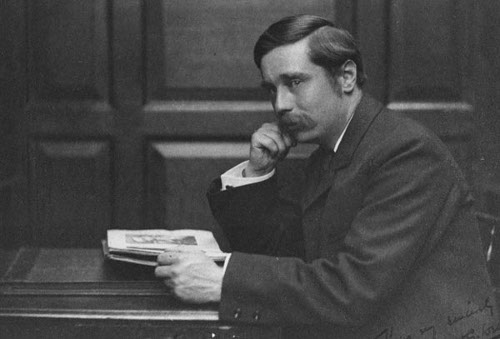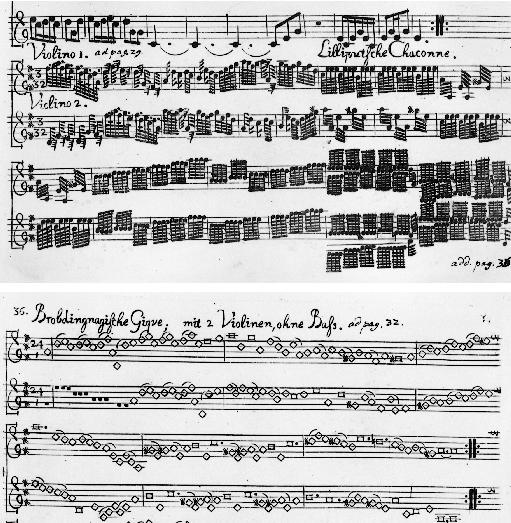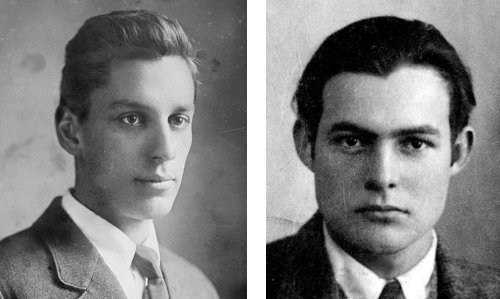
The British Chess Magazine reprinted this “amusing old timer” in 1892. “We suspect that the amusement will be caused by the rapidity of solving it, and the prettiness and surprise of the mating position.” White to mate in two moves.

The British Chess Magazine reprinted this “amusing old timer” in 1892. “We suspect that the amusement will be caused by the rapidity of solving it, and the prettiness and surprise of the mating position.” White to mate in two moves.

Mr. H.G. Wells
Was composed of cells.
He thought the human race
Was a perfect disgrace.
So wrote Edmund Clerihew Bentley in demonstrating the whimsical biographical verse that he invented. “I never heard who started the practice of referring to this literary form — if that is the word — as a Clerihew,” he wrote, “but it began early, and the name stuck.”
That’s as it should be: In a 1981 collection, Gavin Ewart wrote, “Nobody much except Bentley has ever written really good clerihews.” Samples:
“The moustache of Adolf Hitler
Could hardly be littler,”
Was the thought that kept recurring
To Field-Marshal Goering.
It is curious that Handel
Should always have used a candle.
Men of his stamp
Generally use a lamp.
Although Machiavelli
Was extremely fond of jelly,
He stuck religiously to mince
While he was writing The Prince.
The meaning of the poet Gay
Was always as clear as day,
While that of the poet Blake
Was often practically opaque.
A man in the position
Of the emperor Domitian
Ought to have thought twice
About being a Monster of Vice.
Edgar Allan Poe
Was passionately fond of roe.
He always like to chew some
When writing anything gruesome.
The great Duke of Wellington
Reduced himself to a skellington.
He reached seven stone two,
And then — Waterloo!

scroop
n. the rustle of silk

In the early 1970s, AI researcher James Meehan tried to teach a computer to retell Aesop’s fables. This was not always successful:
Once upon a time there was a dishonest fox and a vain crow. One day the crow was sitting in his tree, holding a piece of cheese in his mouth. He noticed that he was holding the piece of cheese. He became hungry, and swallowed the cheese. The fox walked over to the crow. The end.
Henry Ant was thirsty. He walked over to the river bank where his good friend Bill Bird was sitting. Henry slipped and fell in the river. He was unable to call for help. He drowned.
One day Henry Crow sat in his tree, holding a piece of cheese in his mouth, when up came Bill Fox. Bill saw the cheese and was hungry. He said, ‘Henry, I like your singing very much. Won’t you please sing for me?’ Henry, flattered by this compliment, began to sing. The cheese fell to the ground. Bill Fox saw the cheese on the ground and was very hungry. He became ill. Henry Crow saw the cheese on the ground, and he became hungry, but he knew that he owned the cheese. He felt pretty honest with himself, so he decided not to trick himself into giving up the cheese. He wasn’t trying to deceive himself, either, nor did he feel competitive with himself, but he remembered that he was also in a position of dominance over himself, so he refused to give himself the cheese. He couldn’t think of a good reason why he should give himself the cheese, so he offered to bring himself a worm if he’d give himself the cheese. That sounded okay, but he didn’t know where any worms were. So he said to himself, ‘Henry, do you know where any worms are?’ But of course, he didn’t, so he …
“The program eventually ran aground for other reasons,” Meehan writes. “I was surprised it got as far as it did.”
(From Meehan’s The Metanovel: Writing Stories by Computer, 1980.)
John Train’s Most Remarkable Names reports that Chazy Lake, N.Y., has a resident named Constant Agony.
In Stories on Stone, Charles L. Wallis notes that a tombstone in Hood River, Ore., reads:

In The American Language, H.L. Mencken mentions an Indian chief in the northwestern U.S. named Unable-to-Fornicate. “And I once knew a Siletz who insisted with firm complacency that his name, no matter what anybody thought it, was Holy Catfish.”

“I have only made this letter rather long because I have not had time to make it shorter.” — Pascal
“It usually takes more than three weeks to prepare a good impromptu speech.” — Mark Twain
“If you want me to talk for ten minutes, I’ll come next week. If you want me to talk for an hour I’ll come tonight.” — Woodrow Wilson
Also:
Harold Macmillan: “What are you doing, prime minister?”
Winston Churchill: “Rehearsing my impromptu witticisms.”
There is just one spot on earth from which, in an hour’s driving time or less, a motoring tourist can reach either Athens, Belfast, Belgrade, Bremen, China, Denmark, Dresden, Frankfort, Limerick, Lisbon, Madrid, Mexico, Naples, Norway, Oxford, Palermo, Paris, Peru, Poland or Vienna. The spot is situated at about 44° 9′ north latitude, 69° 51′ west longitude, in the county of Sagadahoc, state of Maine, U.S.A., and it is surrounded by towns bearing these names, no one of them more than fifty-five miles away.
— Gary Jennings, Personalities of Language, 1965
On a board in front of a stage-office in Buffalo, I once read, ‘Stages start from this house for China, Sardinia, Holland, Hamburg, Java, Sweden, Cuba, Havre, Italy, and Penn Yan.’
— James Freeman Clarke, On Giving Names to Towns and Streets, 1880

Telemann’s Gulliver Suite has an alarming score — the note values in the chaconne appear “Lilliputian” and in the gigue “Brobdingnagian.”
That’s a joke: The chaconne is notated in “3/32” time and the gigue in “24/1.” If they’re played at the correct tempos they resolve into normal-sounding dances in 3/4 and 9/8.
When Mark Twain took his first job as a newspaper reporter, his editor told him never to report anything as fact unless he could verify it by personal knowledge.
That night Twain covered a social gala. He filed the following story: “A woman giving the name of Mrs. James Jones, who is reported to be one of the society leaders of the city, is said to have given what purported to be a party yesterday to a number of alleged ladies. The hostess claims to be the wife of a reputed attorney.”

In 1937, Max Eastman and Ernest Hemingway found themselves together in Max Perkins’ office at Scribner’s. On Perkins’ desk was Eastman’s Art and the Life of Action, which contained an essay critical of Hemingway. They began to argue. Hemingway bared his chest. Eastman bared his. Hemingway slapped him.
What happened next is unclear. “The trouble with these literary bouts,” opined the New York Times, “is that there is never an official referee on hand. Both sides can claim a decision and a foul at the same time, and usually do.”
But in 1947 the House of Books catalog offered for sale a damaged copy of Art and the Life of Action. On page 95, it said, was a spot caused by contact “with Mr. Eastman’s nose when Mr. Hemingway struck him with it in a gesture of disapproval.” The spot was witnessed by Maxwell Perkins.